Don't wanna be here? Send us removal request.
Text
How cadet pilot programs align with global aviation standards
Introduction
In today’s interconnected world, airlines seek pilots who can meet international safety, operational, and training benchmarks. Cadet pilot programs are specifically structured to align with these global aviation standards, preparing cadets to operate confidently in worldwide airspace.
Globally accepted curriculum and training methods
A Cadet pilot program follows a curriculum that matches international aviation authority guidelines such as ICAO and EASA. From ground school topics to flight maneuvers and simulator scenarios, everything is designed to ensure cadets are trained to meet or exceed global airline expectations.
Exposure to modern fleet and technology
Cadets are trained on advanced aircraft and simulators equipped with the latest avionics, navigation systems, and safety protocols. This prepares them to handle aircraft used by international airlines and ensures a smooth transition when flying across different countries and airspaces.
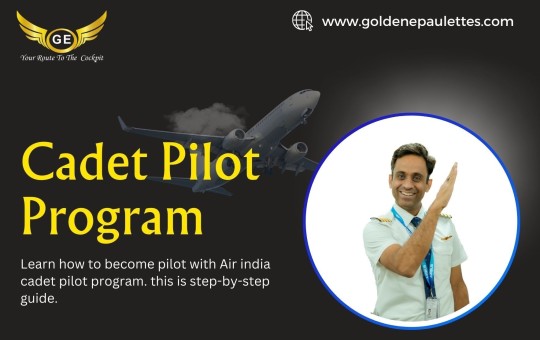
Standardized procedures and communication
International aviation operates on standardized protocols. Cadet programs train students in global aviation phraseology, cockpit procedures, and CRM practices so they can communicate clearly with foreign ATCs and operate in multi-national crew environments.
Conclusion
With training grounded in internationally recognized best practices, a Cadet pilot program ensures that future pilots are not just industry-ready but globally competent. This alignment gives cadets a strong advantage whether they aim to fly with domestic or international airlines.
0 notes
Text
How to manage the cost of pilot training
Understanding the financial commitment
Becoming a commercial pilot is a rewarding journey, but it comes with a significant cost. In India, the overall expense of flight training, exams, and related processes can range between ₹35 to ₹45 lakhs or more. Planning ahead and exploring funding options is crucial for aspirants who want to pursue aviation without financial stress.
Breaking down the expenses
The cost includes ground school, flying hours (minimum 200 as per DGCA), medical tests, examination fees, license processing, and sometimes even hostel and food. Some students also opt for international training, which adds visa, travel, and conversion costs. For a detailed financial roadmap on how to become pilot, this guide breaks down everything step-by-step.
Financing and scholarship options
Several banks offer education loans for pilot training. Students can avail of collateral-based or unsecured loans depending on the institute and repayment plan. Some airlines and flying schools also offer scholarship-based cadet programs where fees are partially or fully covered for meritorious candidates. EMI and installment options are also available at many academies.
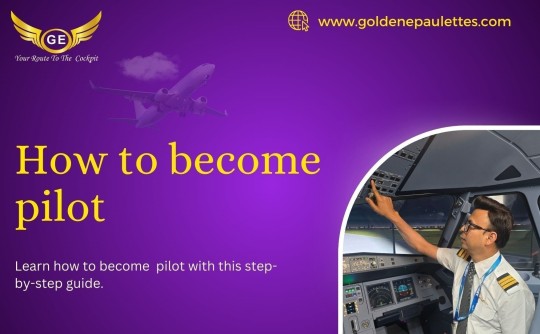
Smart tips to reduce cost
Choose a reputed flying school that completes training on time.
Start with a strong ground school base to avoid exam retakes.
Apply early for DGCA medicals and computer numbers to prevent delays.
Plan your simulator and type rating investments wisely.
Final thoughts
Yes, pilot training is expensive—but with the right planning and financial tools, it's absolutely achievable. Don’t let cost stop you from chasing your dream. To get clarity on all financial aspects and options related to how to become pilot, refer to this complete guide and start your preparation with confidence.
0 notes
Text
How DGCA ground classes shape your time management skills
Time management: A pilot’s most valuable asset
One of the key qualities every pilot must develop is time management. From flight planning to real-time decision-making, managing time efficiently can be the difference between smooth operations and critical errors. Interestingly, this skill starts developing early—right from your DGCA ground classes.
Structured schedules teach discipline
DGCA ground classes usually follow a fixed timetable, helping students develop the habit of consistent study. Balancing multiple subjects like Navigation, Air Law, and Meteorology under a tight academic schedule forces students to prioritize tasks, stay organized, and avoid procrastination—all essential traits for any pilot.
Managing multiple subjects and mock tests
In ground school, students must juggle different topics while also preparing for weekly tests and revisions. This teaches them how to divide study hours effectively and maximize productivity. Learning to switch between technical and regulatory subjects also mirrors the multitasking environment of a real cockpit.

Exam time strategies
Ground classes train students not just on what to learn, but how to approach the exam. Time-bound mock tests help students practice completing paper within the set duration—reducing panic and improving performance. Students learn to allocate time wisely to high-weightage topics and avoid spending too long on a single question.
Lifelong skill built early
The time management habits developed in DGCA ground classes extend far beyond exams. They prepare you for a future in aviation, where flight schedules, briefings, checklists, and in-air decisions all depend on staying on track and thinking ahead. The earlier you build this habit, the better prepared you’ll be as a pilot.
0 notes
Text
Why mock interviews are essential for aspiring airline pilots
Introduction
Getting your Commercial Pilot License (CPL) is only part of the journey. The next big challenge is clearing airline selection processes—which include technical exams, group discussions, and personal interviews. That’s where mock interviews come in.
Preparing for the real thing
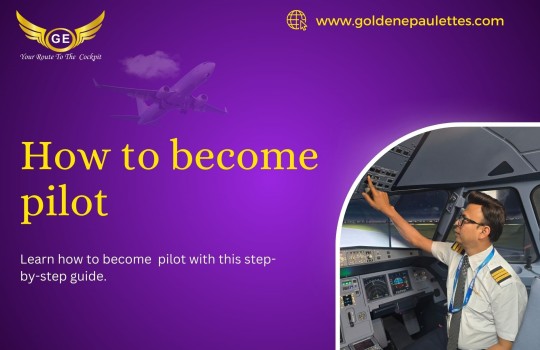
Most students researching how to become pilot focus on DGCA exams and flight training, but underestimate the importance of interview preparation. Airlines assess not just your knowledge, but also your confidence, communication, and presence of mind. Mock interviews simulate these conditions and help you prepare for high-stakes scenarios.
What mock interviews teach you
How to answer HR questions confidently like “Why do you want to become a pilot?”
How to handle technical questions on topics like air law, meteorology, and aircraft systems
Body language and presentation tips to appear calm and professional
Time management during interviews, especially in rapid Q&A rounds or group tasks
Mock interviews also prepare you for psychological evaluations, a common part of cadet pilot programs and airline hiring processes.
Practice makes confident
Just like flying improves with hours, interview skills improve with practice. Repeating mock sessions, getting feedback, and correcting mistakes reduce nervousness and build self-assurance. The goal is to sound natural, stay composed, and make a lasting impression.
Conclusion
Airline interviews test more than your flying skills—they assess your personality, decision-making, and readiness for professional flying. Practicing through mock interviews is the best way to prepare. If you’re focused on how to become pilot, don’t stop at training—start preparing for the interview seat, not just the cockpit seat.
0 notes
Text
The role of English communication in the Air India cadet pilot program
Introduction
Effective communication is as important as technical flying skills in aviation. The Air India cadet pilot program emphasizes English proficiency throughout the training process, as it is the universal language of aviation and a critical skill for safe and clear cockpit operations.
Why English matters in pilot training
The Air India cadet pilot program trains cadets to operate in a professional airline environment where all radio communication, documentation, SOPs, and cockpit conversations are conducted in English. Clear communication with Air Traffic Control (ATC), co-pilots, and crew ensures flight safety and operational efficiency.
Communication skills in selection and training
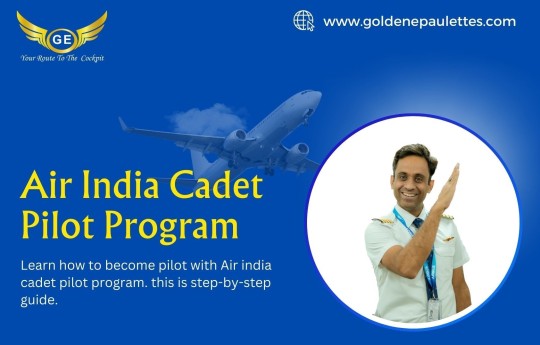
Proficiency in English is tested during the program’s entrance process — especially in group discussions and personal interviews. During training, cadets are expected to read, write, and speak English fluently. Strong communication skills help in understanding technical manuals, expressing decisions confidently, and managing in-flight emergencies calmly.
How cadets can improve
Candidates can prepare by reading aviation materials, watching English aviation tutorials, and practicing with mock interviews. Improving vocabulary, fluency, and listening comprehension can significantly boost a cadet’s performance both during training and later as a professional pilot.
Conclusion
English communication is a vital pillar of success in the Air India cadet pilot program. It empowers cadets to communicate effectively, operate safely, and adapt globally — making it an essential skill for every aspiring commercial pilot.
0 notes
Text
Night flying: A crucial part of pilot training
Why night flying is an essential experience
Flying at night presents a completely different set of challenges compared to daytime flights. Limited visibility, reliance on instruments, and changes in perception make it a critical skill to master. That’s why night flying is a mandatory part of pilot training for aspiring commercial pilots.
What cadets learn during night flights
Students are trained to take off, navigate, and land in low-light conditions. They learn to use cockpit lighting, runway illumination, and radio aids to operate safely. A quality pilot training program provides structured night flying sessions, ensuring students gain confidence under real conditions.
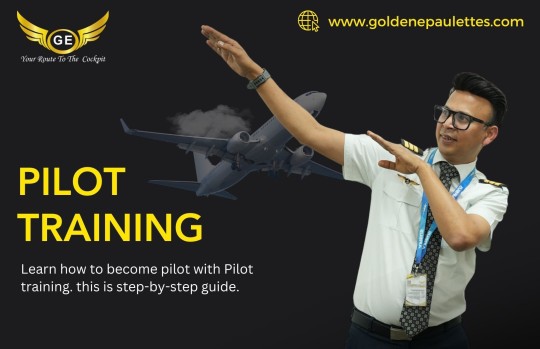
Developing stronger instrument and situational skills
Since external visual references are minimal at night, pilots must rely more on their instruments. This sharpens their focus and improves cockpit awareness. Night flying also teaches them to trust their training over instincts, which is vital for safe aviation practices.
Final thoughts
Night flying builds confidence, sharpens skills, and prepares students for airline-level operations. If you’re planning to become a professional pilot, make sure your pilot training course offers comprehensive night flight exposure under expert supervision.
0 notes
Text
Why DGCA ground classes are the first milestone in a pilot’s journey
The journey begins with theory
Before you wear the pilot uniform or step into a cockpit, your journey begins in a classroom. DGCA ground classes are the foundation of your aviation career, designed to prepare you for India’s DGCA exams—an essential requirement to obtain a Commercial Pilot License (CPL).
A structured path to success

Enrolling in Dgca ground classes gives you a roadmap to follow. These classes offer detailed lessons on Air Navigation, Meteorology, Air Regulations, and Technical General. With experienced mentors, daily schedules, and regular assessments, they transform your dream into a disciplined plan of action.
Builds mindset and discipline
Beyond academic knowledge, ground classes help develop focus, consistency, and time management—qualities that every pilot must master. The classroom environment, expert guidance, and peer interaction help shape a professional mindset from day one.
Conclusion
Clearing DGCA exams marks your first big achievement as a pilot. By choosing the right Dgca ground classes, you not only pass exams but also build the habits and confidence needed to succeed in your entire training journey. It’s where every aspiring pilot truly begins.
0 notes
Text
Is pilot training in India better than abroad?
Choosing the right training destination
One of the most common questions aspiring pilots ask is whether they should train in India or go abroad. Both options have their advantages, but the final decision depends on personal goals, budget, and career plans. Let’s explore how pilot training in India compares to international training.
Cost and regulatory compatibility
One major advantage of Pilot Training in India is its cost-effectiveness. Training locally is generally more affordable as it avoids currency conversion, travel, and visa expenses. Moreover, Indian flying schools are DGCA-approved, which makes it easier to get a Commercial Pilot License (CPL) without the hassle of foreign license conversion.
Training quality and infrastructure
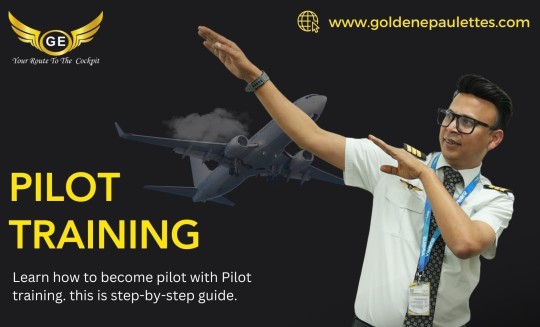
India’s top flying schools now offer modern fleets, advanced simulators, and experienced instructors. Many institutes have tie-ups with international academies, ensuring global-standard training while staying in the country. However, training abroad may offer exposure to busier airspaces and varied weather conditions, which can be a plus for some students.
License conversion challenges
Students who train abroad must return to India and convert their foreign CPL into a DGCA license, which involves additional exams and validations. This adds time, cost, and uncertainty to the process. In contrast, training in India ensures smoother entry into the Indian aviation job market.
Conclusion
Pilot Training in India is a smart choice for those who want quality training, lower costs, and a direct route to working in Indian airlines. While overseas options offer exposure, India’s training landscape is now strong enough to match international standards and launch a successful aviation career.
0 notes
Text
The role of flight simulators in enhancing flying training in India
Introduction
Flight simulators have revolutionized how pilots are trained. By providing a safe, cost-effective, and controlled environment to learn and practice, simulators have become an essential part of aviation education across the country.
What is a flight simulator?
A flight simulator is a computer-based system that replicates real-world flying conditions. It mimics aircraft controls, weather scenarios, and airport environments, allowing students undergoing flying training in India to experience complex situations without leaving the ground.
Benefits of simulator training

Simulators help students practice emergency procedures, navigation, night flying, and instrument flying (IFR) without risk. They also improve hand-eye coordination, checklist discipline, and cockpit resource management. Sim sessions can be repeated multiple times to perfect specific maneuvers or correct common mistakes.
Cost-effective and time-saving
Using simulators reduces the number of actual flying hours needed to develop core skills, making training more affordable. It also helps when weather or aircraft unavailability causes delays in real flight schedules—ensuring that students continue learning without losing time.
Conclusion
In today’s aviation world, no training is complete without simulator experience. For students undergoing flying training in India, simulators provide a vital bridge between ground school and real cockpit experience—making learning safer, faster, and far more effective.
0 notes
Text
Medical fitness requirements for flying training in India
Introduction
Flying an aircraft demands sharp senses, quick reflexes, and excellent health. That’s why medical fitness is a key requirement for anyone pursuing a career in aviation. In India, the Directorate General of Civil Aviation (DGCA) has set specific medical standards that every aspiring pilot must meet.
Types of medical examinations
Before beginning flying training in India, students must clear a Class 2 medical examination conducted by a DGCA-authorized doctor. This is followed by a more detailed Class 1 medical, which is mandatory to obtain a Commercial Pilot License (CPL). These tests check vision, hearing, blood pressure, ECG, chest X-ray, and overall fitness.
Class 2 vs. Class 1 medical
Class 2 is generally easier and serves as a preliminary check to ensure you're fit to start training. Once you're ready to apply for your CPL, you'll need a Class 1 medical—more thorough and valid for commercial flying. It's advised to complete your Class 1 medical early in your training journey to avoid surprises later.
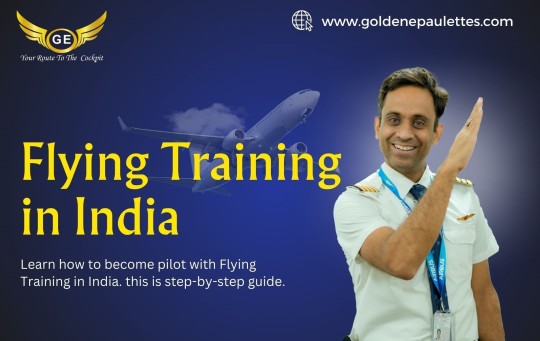
Tips to stay medically fit
Maintain a healthy lifestyle, regular sleep, and a balanced diet. Avoid smoking and excessive alcohol, as these may impact medical test results. If you have any medical conditions, consult a DGCA-approved medical examiner for advice on eligibility and treatment options.
Conclusion
Medical clearance is a non-negotiable part of flying training in India. Prioritizing your health ensures a smooth entry into aviation and reduces the risk of training interruptions. Stay fit, stay clear, and fly high with confidence.
0 notes
Text
Importance of English language skills in pilot training
Aviation speaks one language globally
English is the international language of aviation. From communicating with air traffic control to understanding flight manuals and global procedures, pilots must be proficient in both spoken and written English to operate safely and professionally anywhere in the world.
English training in pilot training programs
In a professional Pilot Training setup, English proficiency is often assessed during enrollment and strengthened throughout the course. Trainees are expected to use standard aviation phraseology, respond clearly to ATC instructions, and comprehend technical documents with precision.
Why English matters in aviation
Radio telephony (RT): All ATC communication follows English-based phraseology
Exams and study material: Most ground school content is in English
Emergency response: Clear communication can save lives in high-pressure situations
Global flying standards: Airlines around the world require pilots to meet ICAO English Level 4 or higher
A lack of fluency can lead to misunderstandings, delays, or even safety risks in critical moments.

Building fluency during training
Flight schools integrate English into every aspect—briefings, classes, checklists, and simulator interactions. Regular oral evaluations, RT drills, and written assessments help students become confident and fluent aviation communicators.
Conclusion
English fluency is not just a requirement—it’s a vital skill that supports safe and efficient flying across international skies. Enroll in a Pilot Training institute that recognizes this and helps you build the language skills needed to succeed in both training and a global aviation career.
0 notes
Text
Importance of simulator training in the Air India Cadet Pilot Program
Practicing precision before the real flight
Flying a commercial aircraft involves complex procedures, quick decision-making, and handling unpredictable scenarios. The Air India Cadet Pilot Program incorporates high-quality simulator training to prepare cadets for real-world cockpit environments—before they even take off in an actual aircraft.
Realistic training without real-world risks
Through the Air India Cadet Pilot Program, cadets get hands-on experience with flight simulators that mirror actual airline cockpit setups. These simulators replicate various weather conditions, in-flight emergencies, and technical failures, helping students master procedures and responses without the risks associated with actual flight.
Building muscle memory and confidence
Simulator sessions are crucial in helping cadets develop the muscle memory needed to operate aircraft systems. From take-offs and landings to handling diversions or system failures, every action is practiced repeatedly until it becomes second nature—boosting a cadet’s confidence and readiness.

Focused feedback and improvement
Every session is monitored and reviewed by experienced instructors who provide targeted feedback. This helps cadets identify their weak points and improve quickly, ensuring continuous skill development throughout the training period.
A vital element of becoming airline-ready
Simulator training is not just a support activity—it’s a cornerstone of professional pilot training. Through the Air India Cadet Pilot Program, cadets gain essential flight experience in a controlled, instructive environment that fully prepares them for real airline operations.
0 notes
Text
The benefits of small batch sizes in DGCA ground classes
More attention for each student
Small batch sizes ensure that students receive individual attention, which helps clarify doubts quickly and promotes a better learning environment.
DGCA ground classes focus on quality teaching
Reputed DGCA ground classes maintain limited batch sizes to create a personalized experience. At DGCA ground classes, this approach allows instructors to engage more effectively with every student and address their specific learning needs.

Enhances peer interaction and group learning
Smaller groups encourage active discussions, fostering teamwork and deeper understanding of aviation concepts through peer learning.
Join DGCA ground classes with limited batch sizes
For a focused and interactive learning experience, choose DGCA ground classes that prioritize smaller batches for better results.
0 notes
Text
The importance of aviation meteorology in pilot training
Weather and flight safety
Weather plays a major role in aviation. Conditions like fog, thunderstorms, wind shear, and turbulence can impact every phase of flight. That’s why understanding meteorology is not optional—it’s essential for every aspiring pilot.
Weather knowledge in Pilot Training
Pilot Training includes detailed meteorology training where students learn to read weather charts, decode METAR and TAF reports, and interpret radar and satellite data. They’re taught to anticipate weather changes and make informed go/no-go decisions.
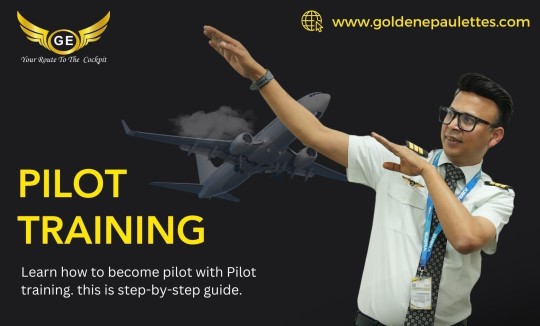
This skill helps pilots avoid hazardous conditions and reroute if necessary, ensuring safer flights.
Real-time weather decisions
Pilots must be ready to adjust flight plans based on sudden weather updates. The ability to interpret cloud formations, frontal systems, and visibility forecasts can prevent accidents and ensure smoother operations.
Conclusion
Weather is unpredictable, but a well-trained pilot is always prepared.
Through expert Pilot Training, cadets gain the meteorological knowledge they need to fly with confidence—no matter what the skies hold.
0 notes
Text
How to prepare for the Air India Cadet Pilot Program exams
Introduction
Preparing for the Air India Cadet Pilot Program exams can be challenging, but with the right strategy and dedication, you can clear the tests and move closer to your dream of becoming a pilot.
Understand the syllabus and exam pattern
The written exams primarily cover Physics, Mathematics, and English based on the 10+2 curriculum. It’s important to get familiar with the syllabus and exam pattern of the Air India Cadet Pilot Program so you can focus on the key areas tested.
Practice regularly and take mock tests
Consistent practice is essential. Solve previous years’ question papers and take mock tests to improve your speed and accuracy. This will also help reduce exam anxiety and boost confidence.

Focus on fundamentals and concepts
Rather than rote learning, aim to understand the basic concepts, especially in Physics and Mathematics. This will help you answer tricky questions and apply knowledge effectively during the exam.
Stay healthy and manage time well
Physical and mental fitness is crucial. Maintain a healthy routine and ensure proper sleep before exams. Time management during preparation and while taking the test is key to covering all topics and finishing on time.
Conclusion
With disciplined preparation and focus on the right areas, cracking the exams of the Air India Cadet Pilot Program becomes achievable. Start early, stay consistent, and keep your goal in sight.
0 notes
Text
The benefits of ground school in flight training
Introduction
Ground school is a fundamental part of flight training that provides aspiring pilots with the theoretical knowledge required for safe and efficient flying.
What happens in ground school?
During flight training, students study subjects such as aerodynamics, meteorology, navigation, and aviation regulations. This classroom learning supports the practical flying lessons.
Building a strong foundation
Understanding the science and rules behind flying helps students make better decisions during actual flights. Ground school also prepares them for written exams required for pilot certification.
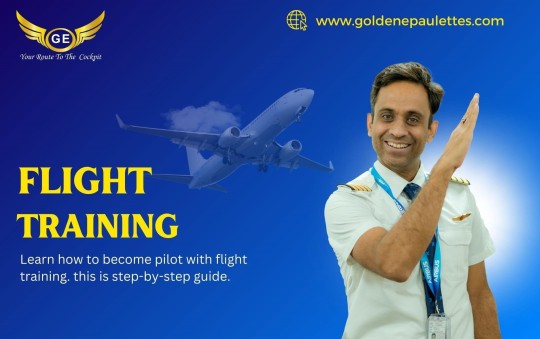
Integration with practical training
The knowledge gained in ground school is applied during flight hours. This combination of theory and practice ensures that students comprehend why certain procedures are followed and how to react in various situations.
Importance of continuous learning
Aviation is a constantly evolving field. Ground school instills the habit of continuous education, encouraging pilots to stay updated on new technologies and regulations.
Conclusion
Ground school plays a crucial role in comprehensive flight training. It equips student pilots with essential knowledge, paving the way for successful flying careers.
0 notes
Text
How DGCA ground classes help you stay updated with syllabus changes
Adapting to evolving DGCA exam patterns
The Directorate General of Civil Aviation (DGCA) occasionally updates exam patterns, subjects, and question formats to align with global aviation standards. Staying updated with these changes is critical for success in the exams.
DGCA ground classes keep you current
Leading DGCA ground classes make it a priority to stay aligned with the latest DGCA guidelines. Institutes like DGCA ground classes revise their materials, conduct updated mock tests, and provide students with current question banks based on the latest exam trends.

Why staying updated matters
Using outdated resources can lead to confusion and poor performance. Updated study plans help students focus only on relevant topics and avoid wasting time on obsolete content. It also gives an edge in competitive aviation training environments.
Enroll in DGCA ground classes for up-to-date guidance
If you're serious about clearing your exams confidently, join programs that follow the latest DGCA standards. Enroll in DGCA ground classes and stay fully updated throughout your exam preparation journey.
0 notes